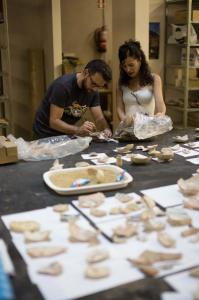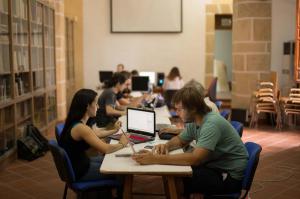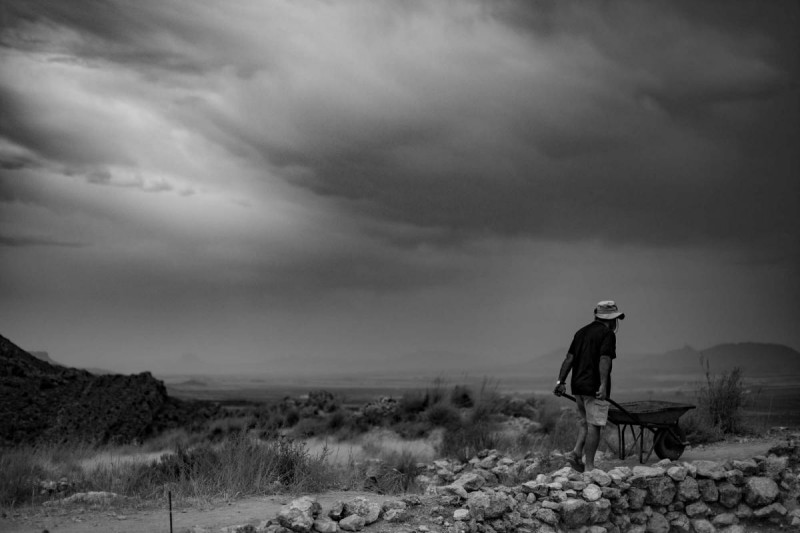Fieldwork
This listing expired on August 26, 2018. Please contact cepoat@um.es for any updated information.





Location: Murcia, MU, ES
Season: August 26, 2018 to September 9, 2018
Session Dates: From August 26th to September 9th 2018
Application Deadline: August 26, 2018
Deadline Type: Exact date
Website: http://www.um.es/cepoat/schoolofarchaeology/?page_id=171
Discount for AIA members: No
Program Type:
Field school
RPA Certified:
no
Affiliation:
Murcia University
Project Director:
Dr. José Miguel García Cano. Associate professor of archaeology at the University of Murcia. Director of the Museum of the University of Murcia. Dr. in Iberian archaeology. His research has focused on the Iberian World with the thesis: The Iberian cemeteries in Murcia. A paradigmatic example. Coimbra del Barranco Ancho. Analytical study. He is the author of fifteen books and hundreds of scholarly articles on Iberian archaeology, Greek pottery and museum.
Project Description:
This course is aimed at students and people interested in archaeology who wish to participate with us in this archaelogical course at the site of Coimbra, located 2 km South of Jumilla in Murcia (Spain), will be able to study first hand the classic Iberian town and necropolis in the Iberic period.
The Iberian village of Coimbra del Barranco Ancho in Jumilla is located at 38 ° 26’9 “North latitude and 2 ° 21’40” East longitude, according to the sheet n ° 869 “Jumilla” of Catastral Geographic Institute at 1: 50,000, to 4.5 km. South-Southeast of the town of Jumilla, in the Northern foothills of the Sierra de Santa Ana.
From Jumilla it is accessed by the county road 344 to Cieza. A little over three kilometers, turn left taking a path to Iryda service road that connects with the main road to Jumilla, leading to the monastery of Santa Ana. After only a mile you will find a narrow gauge road which turns to the right (almost a path) called “Casa del Cerro» between vineyards that finishes in an abandoned village, where there was a water source until a few years ago. This fountain is at the base of Cerro del Maestre, at the foot of the necropolis path. The sanctuary is about 150 m. to the East and the village necropolis where the main access to the village is can be found at about 300 m. to the West.
In recent years the CEPOAT has been working with this site on the development of their excavations, as one of the members of CEPOAT is the director of this dig.
The archaeology course we offer is an intensive training course in fundamentals such as Strati-graphy, GIS, Photogrammetry, CAD, topography, field drawing, materials inventory, etc
The developed program is as follows:
1. Introduction to archaeology.
1. Concept, limits and meaning of archaeology.
2. Archaeology and sources: written and materials.
3. Methods and techniques: the exploration, excavation and dating methods.
2. Methods and techniques of archaeological excavation.
1. The formation of the archaeological record: General deposition processes.
2. The concept of strata and training: relative dating. Terms ante quem and post quem. The concept of strati-graphic unit. Strati-graphic relationships between units. The matrix Harris.
3. The system open area excavation and its application in different situations.
4. The data record. The daily and strati-graphic records. The field drawing and photography in the excavation.
5. The manual collection of objects. Artifacts and registration. The recovery of small remains: screening and flotation. The first preservation of the remains in the field.
3. The archaeological field drawing.
1. Introduction to archaeological field drawing: registration.
2. Main instruments and materials of archaeological field drawing.
3. Techniques for making the planimetry of the site: the perpendicular to the reference axis, triangulation, cross drawing, elevations and walls.
4. The planimetry: scale and landmarks.
5. The use of new technologies for the drawing: photogrammetry.
6. The Kite aerial photography (KAP).
4. The layout of the site: basic principles of surveying, leveling and total station.
1. The layout of the site: basic principles.
2. Basic Principles of surveying and leveling.
3. How to install a level and take dimensions.
4. The use of the Total Station.
5. The recording of archaeological remains: materials inventory.
1.The archaeological inventory: method and phases.
2.Physical characteristics and technology of archaeological materials.
3.Physics description, use and functionality of the archaeological material.
4.The record of archaeological materials: inventory. Cleaning, sorting, and numbering (recording). Tables and databases.
6. Ceramics: Iberian and Greek pottery.
1. The Iberian pottery
2. The Greek pottery
7. The technical drawing of archaeological materials.
1. The technical drawing of archaeological materials: basic principles.
2. Materials needed for technical drawing of archaeological materials.
3. Phases technical drawing: outline, details, profile and section.
4. Scale, frame and shadow drawing artifacts.
5. The technical drawing of pottery pieces.
6. The digital drawing of archaeological materials.
8. Computer Management of archaeological records: Draftsight, Inkscape, Gimp, Databases, etc.
1. Vector Drawing with Draftsight and Inkscape.
2. Photo retouching with Gimp.
3. Databases with Open Office.
9. SIG. Applications to the archaeology of the area.
1. Basic concepts of cartography.
2. Using QGIS.
3. Geo referencing of raster data.
4. Generation of Digital Terrain Models.
5. The interpolation of vector data.
10. Preventive conservation and restoration of sites.
1. Buried and exhumed objects. The conservation of movable and immovable property.
2.Taking care of the objects found in the intervention. The figure of the restored-conservative archaeological excavation equipment.
3. Preventive conservation of archaeological remains: bindings and coating remains.
4. The restoration of the deposits: intervention criteria. Methods and techniques.
11. Presentation of results: writing memoirs, interpretation and publications.
1. The development of the report of the archaeological excavation.
2. The presentation of the results: Final Report.
3. Content of Memory: results, performance, floor plans, records of strati-graphic units, photographic repertoire, materials inventory, etc.
4. Publication of the results: social obligation
5. How to prepare press releases, scientific articles and conferences.
Period(s) of Occupation: Iberic
Notes:
This course is aimed at students and people interested in archaeology who wish to participate with us in this archaeological course at the site of Coimbra, located 2 km South of Jumilla in Murcia (Spain), will be able to study first-hand the classic Iberian town and necropolis in the Iberic period.
Project Size: 1-24 participants
Minimum Length of Stay for Volunteers: 15 days
Minimum Age: 18
Experience Required: No experience is required but preference is given to undergraduate and graduates studying relevant fields of knowledge but other people interested in this field are also welcome.
Room and Board Arrangements:
The students will stay in the youth hostel CECA- Centro de Capacitación Agraria. This hostel offers group rooms, showers, toilettes and leisure spaces for young people. Capacity: 20 people. Breakfast, mid morning snack, lunch and dinner will be prepared by a local chef at a nearby lodge restaurant. If there are any vegetarians or anybody with any kind of allergy should inform us as soon as possibly. Cost: 300€
Academic Credit:
5 credits offered by Murcia University. Tuition is Yes.
Jose Javier Martinez Garcia - Cepoat
Cepoat - Saavedra Fajardo University Building C / Actor Isidoro Máiquez 9
Murcia
Murcia
30007
Spain
Phone: 0034 666125197
The AIA is North America's largest and oldest nonprofit organization dedicated to archaeology. The Institute advances awareness, education, fieldwork, preservation, publication, and research of archaeological sites and cultural heritage throughout the world. Your contribution makes a difference.